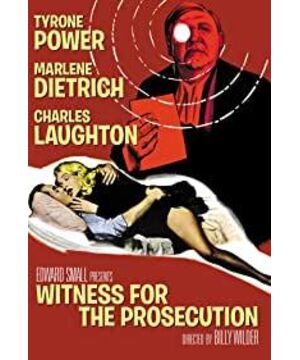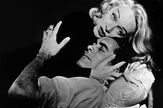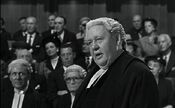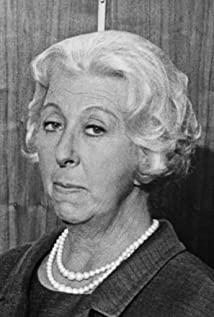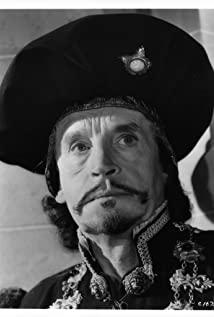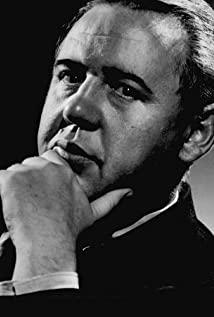It can be noticed that, usually in a scene, the lens often only moves horizontally and does not change, which makes the audience's perspective and the audience's line of sight to the stage similar to that of the audience in the stage play, but based on the characteristics of the lens, the film is in detail. The operation adds a richer layer, making the film come from the stage and higher than the stage. Here are a few examples:
1. Listening to the client's story There are only three scenes in a scene, the protagonist is holding a cigar, and two times from backtracking to In reality, cigars are shorter. This kind of treatment on the stage may be solved by the characters ending the scene, but it is not so simple to deal with in the form of a movie. Imagine if the protagonist does not smoke a cigar, the feeling of the camera returning to reality will be extremely monotonous and boring,
2. The scene where the prisoner met Christine for the first time in Germany. He put half a glass of wine on the hot water pipe when he escaped from the bar in the chaos, and took the wine away from the front of the camera when he came back. It is also conceivable that such a scene is in There is no need to switch on the stage, just let the actors walk out and back in. This kind of scene connection makes the feeling of the stage and the details of the film ingeniously combined. Among them, the emphasis on the traditional form of the film comes from the sense of simplicity. classic.
There are many other examples, such as cocoa cups filled with brandy, reflective glasses used for lie detectors, and offset microphones when testifying in court, all of which use a detail in the scene to make the characters more vivid or the scene changes. more fluid.
If you look closely, these examples show the same staged characteristics: in addition to performances and lines, there are other obvious elements in the scene to form the characters. In terms of development, this can be said to be similar to staged performances. Due to the prying perspective of the film , the large-scale performance has lost its necessity, and the task of creating an image also requires new undertakers. Between film techniques (lens, sound effects) and stage adaptation (cigars, glasses), this film chose the latter, This adds a layer of boilerplate flavor to the film, making it less "cinematic".
Another obvious feature is that the film often uses a single/fixed shot to complete the scene construction. The most obvious example of this is that the protagonist has been showing heart discomfort in the background of the camera while the foreground performance in the first trial. If in contemporary movies In the novel, such plots will mostly use different scenes rather than one shot, and the fidelity to the original stage play is undoubtedly the reason for this creation.
In this way, the audience can experience the experience of a variant stage performance (there is no staged performance, but the characters are as vivid as they are on the stage) and the rhythm of the stage plot (the film technique takes a back seat, and the scene rather than the camera) Touching, the rhythm of the plot is very similar to the stage). This is undoubtedly a comprehensive and complex viewing experience that most people may not actively notice.
Going back to the contemporary perspective, when movies not only give full play to the techniques that are characteristic of movies, but have even evolved into an era where computers can simulate performances, the authenticity of movies since the new century has made it necessary for us to have certain movie viewing experience. Only then can an "old movie" such as "The Witness for the Prosecution" be properly understood. For this movie, the main obstacle is that the movie loses its authenticity while possessing the characteristics of the stage, and authenticity is generally pursued by contemporary audiences. Admittedly, in a relaxed sense, the violent scenes of all the films before the 1990s can actually prove this trend of the true vision of contemporary audiences. Now the general audience will be dissatisfied with the "unreal" performance in the films before the 1990s, so Doubt or disgust with the content of the entire film. The audience has become so accustomed to this logic system that there are often cases where the plot of the film is integrated into the real logic to evaluate the story of the film. It is conceivable that "The Witness for the Prosecution" is such a judgment in contemporary times. How "inferior" will be considered under the standard, from another perspective, even in terms of the judging standards of contemporary relatively professional film forms, many of the treatments in this film are still deeply unaccustomed. In fact, the source of the audience's dissatisfaction is not "unreal", but the ignorance of other elements worth paying attention to in the film, resulting in an unbalanced attention to the film, resulting in an incomplete decoding of the film. If you fully understand the plot and shots in a film The status and significance in creation can be easily digested due to the understanding obstacles caused by the differences between the social culture at that time and today. It means that there are advantages and disadvantages in form,
So what is the inspiration? As an audience, improve your understanding of film art, and watch films from the perspective of films; as a creator, the principle that films are always dreams should be taken seriously, and the "reality" and "dream" in films are always in relative terms. Even if the reality itself is a part of the film technique, it is a basic requirement to enter the context of the film when creating a film. In addition, the understanding of film art reflected in the creation of a stage film like this film is Classic and worth learning.
View more about Witness for the Prosecution reviews


